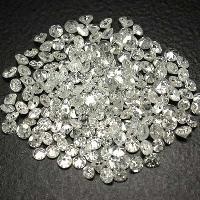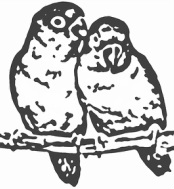1 Comment
a blog about diamond truthiness and off-the-beaten-path diamond options . . . . . . . . . . . . . . . . . . . . . . . . . . . . . . . . . . . . . . . . . . . . . . . . . . .
Now for some answers about conflict free diamonds... What is a “conflict diamond”? What is a “blood diamond?” I don’t want one of those... A “blood diamond" is a more dramatic term for a "conflict diamond." Sometimes consumers need a more graphic mental image to help them realize their buying choices have direct impact on the lives of people in other countries. Oh. Ok. So then what is a “conflict free diamond”? In 2002 the Kimberley Process defined “conflict free diamonds” as: "diamonds that have not funded official war against recognized governments." However, the bar for this definition is set lower than you might think. “Conflict Free” only means that the sale of that diamond didn’t go to fund official conflict, not that the diamond avoided all human rights abuses or environmental destruction. So what is the Kimberley Process exactly? The Kimberley Process is a coordinated international system of verification and certification that seeks to exclude from the global supply chain all diamonds from unofficial channels that could have been used to fund an official war against a recognized government. This UN resolution was helpful in cleaning up the diamond trade in the early 2000’s, but nowadays there are many unofficial conflicts taking place around the diamond trade, and the KP doesn’t watchdog over unofficial conflict (like human rights abuses). The Kimberley Process is outdated and is no longer very useful, but terms like “conflict free” still sound legitimate. Unfortunately, the majority of diamond jewelry consumers simply do not understand the nuances of this definition, and most major wedding industry giants and deep-pocketed national jewelry chains don’t spend time doing research, investigating, or engaging in a meaningful conversation with the public. When major publications and retailers don’t get the facts straight they end up perpetuating some dangerous myths about the true definition of “conflict free”.  Who sells “conflict free diamonds”? It is incredibly easy to buy a “conflict free diamond”. All diamonds sold legally in the US are officially labeled as “conflict free”. The diamond pipeline to the US ensures that all diamonds are deemed “conflict free” so jewelers don’t have the option to sell you anything other than “conflict free diamonds”. Unless they are going to the effort of bypassing their regular suppliers and seeking out blood diamonds from an international arms dealer, you can be pretty sure that they are selling standard-issue “conflict free diamonds”. That’s great, except for the point that the label “conflict free” might not meet your ethical standards. What can I do to make sure I get an ethical diamond? You want to find a jeweler who inspires you to ask questions and is willing to get you answers. Canadian diamonds are a great option if you’re feeling particular about origins. Mining companies operating in Canada are working closely with scientists and the government to limit environmental destruction. There are also progressive programs taking stronger root in parts of Africa, Russia and Australia. There are some companies who have made it their mission to only sell ethical origin diamonds so that you don’t have to get your masters in global politics in order to buy a damn ring. Ultimately it’s up to you to ask the relevant questions of any jeweler you choose to work with. If pressed, they can source a verified ethical origin stone. It’s possible. It just takes effort. Can naturally mined diamonds be “sustainable”? No. It takes millions to billions of years to grow a diamond within the earth. Surprisingly, there are quite a lot of diamonds down in those volcanic pipes, but most are out of our reach, even with the modern equipment and invasive mining processes we use. Diamond pipes are less likely to run out of diamonds than they are to get to a certain depth beyond which it costs more to continue to dig than the diamonds are worth. It is at that point that a company will shut down the mine and move to a new location. Diamond mining companies are always looking for new areas where diamonds can be easily and economically mined. In short, by definition, mining is never “sustainable”. Some enterprises are better at managing the destruction than others. Look for diamond companies that are at the very least paying attention to their environmental practices and aiming higher than the status quo. Are lab created diamonds more environmentally friendly than naturally mined diamonds? Lab created diamonds can be more environmentally friendly than mined diamonds if the power source is dealt with responsibly. It takes a lot of electricity to grow a diamond, so solar powered diamond labs are the place to look. Otherwise, the power is coming from a hydro-electric dam, coal, or nuclear power. How about recycled diamonds? Re-using an existing diamond is, by definition, eco-friendly. The 3 D’s (divorce, death or debt) usually come into the picture in order to cause the unsetting of a diamond from its original piece of jewelry. If you are interested in this option ask for a “post consumer diamond" or consider an antique engagement ring. In conclusion, If you’re a shopper: where there’s a will, there’s a way. We are here to help you navigate this process. Because of our unaffiliated status, we are in a unique position to offer you our unbiased opinion and to help you define your values. We work with many designers and diamond retailers who make it their business to work with ethically sourced gems. We can help you research your concerns and get in touch with retailers who focus on the specific type of ethical product you’re after. Almost all jewelers have access to a higher standard of socially and environmentally conscious choices. You just have to ask! Asking “is this diamond conflict free?” isn’t enough. Keep going and ask questions like “will you source a diamond from a specific origin for me?” If you’re a jeweler and/diamond retailer: brush up on your diamond knowledge. Consumers are passionate, thoughtful, and increasingly willing to make their principles their top priority when choosing between options. Get ready to answer increasingly nuanced and complex questions about your industry as a whole. Retailers with meaningful answers, information, and access to the kind of material that shoppers insist upon will have a strong advantage over retailers that don’t bother. Sincerely, Squeaky Wheels, Danielle Mainas |
Archives
March 2021
Categories
All
|



 RSS Feed
RSS Feed
